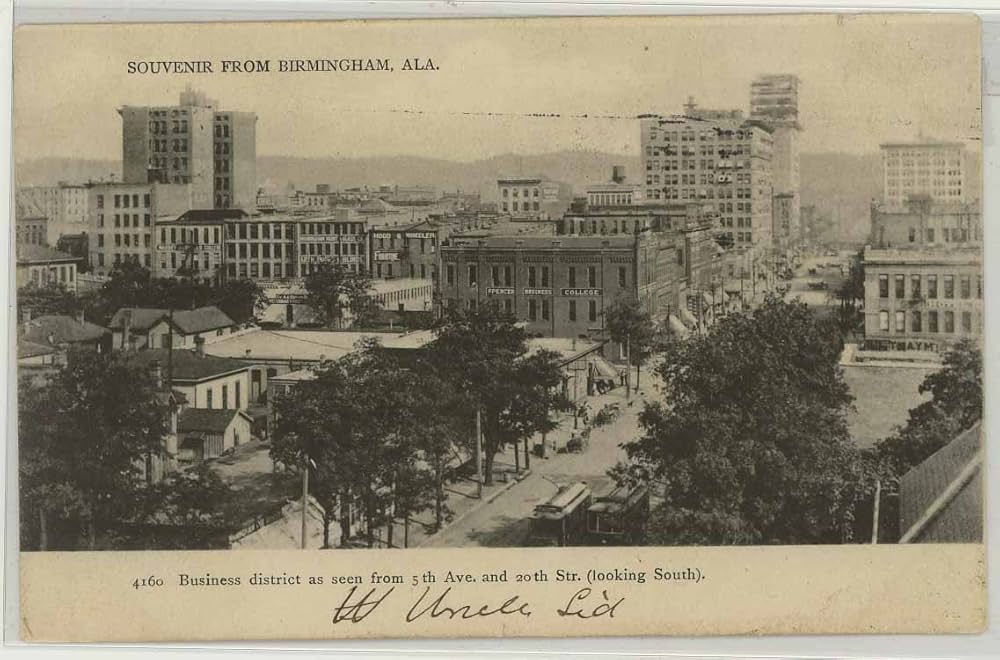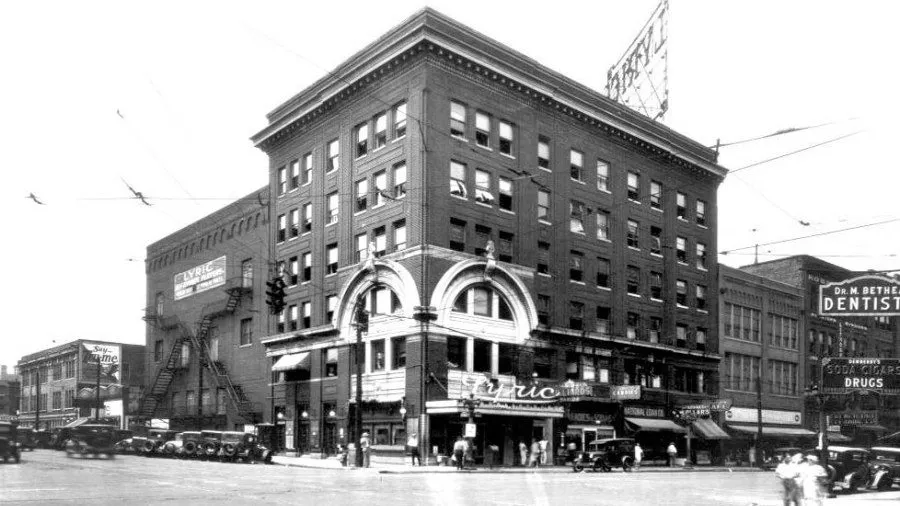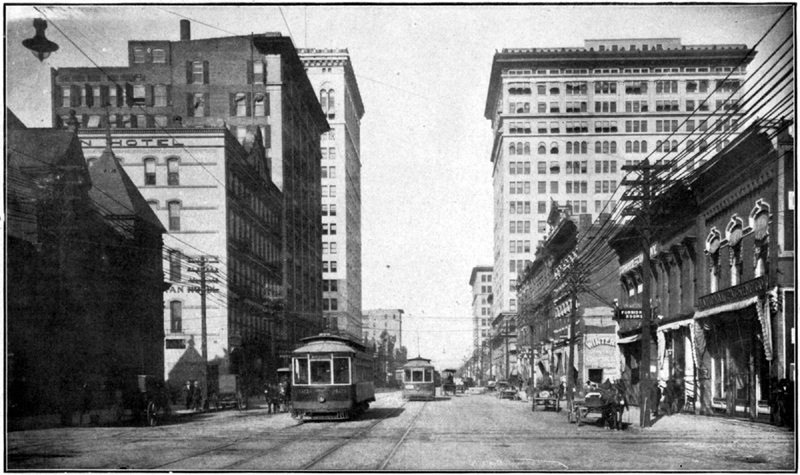
Every May ushers in a celebration of the buildings and landmarks that bestow places — main streets, downtowns and cities — with their unique character and a sense of place: Historic Preservation Month. Established in 1973 by the National Trust for Historic Preservation, this observance highlights the importance of protecting our nation’s heritage. Here in the Magic City, this month serves as a reminder of the rich tapestry of history woven into the city’s architecture — especially downtown.
In past years, we’ve explored downtown Birmingham’s preservation wins and mourned its losses; this time, we’re turning our attention to the tools that help make preservation possible. In this piece specifically, we’ll be diving into what is arguably the most foundational tool — and often the first step — in any preservation project: getting a building or district listed on the National Register of Historic Places.
The National Register’s purpose (and why it matters)
Think of the National Register of Historic Places as the nation’s scrapbook — a thoughtfully curated list of the buildings, districts and landmarks that tell the story of who we are and where we’ve been. Established by the National Historic Preservation Act of 1966 and managed by the National Park Service, the Register helps communities across the country (and right here in Birmingham) identify, celebrate and care for the places that make their history tangible.
Getting listed on the National Register comes with more than just bragging rights — though official recognition of a property’s historical, architectural or cultural significance is certainly something to celebrate. It can also mean real financial benefits, like access to Federal and state tax credits that help ease the cost of restoration. Beyond the dollars and cents, listing can unlock preservation grants that support both the small details and the sweeping changes that preservation often requires. And perhaps most importantly, it gives the property a seat at the table when federal projects are in play — helping ensure that our history is considered before decisions are made that could affect it.

The Magic City impact: Building a legacy of historic districts
Downtown Birmingham is home to a rich array of historic districts, with eleven listed on the Register — not to mention the fifty individual buildings within the downtown footprint that are also listed! With such a strong foundation, we have plenty of opportunities to continue growing and enhancing these districts. Oh, and more than our fair share of great reasons to back up that work:
Protecting property values
Historic districts help protect the charm that makes a neighborhood feel special — and that goes a long way in keeping property values steady. Buyers are drawn to these areas because they know the unique features they love are likely to stick around. It’s also a favorite selling point for realtors, who know just how appealing a historically-rich neighborhood can be.
Inspiring better design
Historic districts tend to spark more thoughtful design — the kind that pays attention to materials, details and how everything fits together. Instead of cookie-cutter construction, you’ll often find more creative, inviting spaces. In fact, studies show these areas tend to be more attractive and engaging for both the people who live there and the folks just passing through.
Sustainability in action
Preserving historic districts isn’t just good for the soul — it’s good for the planet too! Reusing existing buildings saves resources, cuts down on construction waste and keeps perfectly good materials out of landfills. It’s a smart, eco-friendly way to grow a city while keeping its character intact.
Educational treasure troves
Historic districts are like open-air classrooms — no textbook required. Each block has a story to tell, from the way buildings were designed to the cultural moments they’ve witnessed. They offer locals and visitors a deeper connection to Birmingham’s past, making history something you can actually walk through.
Heritage tourism
Preserved historic districts are natural magnets for tourists. When a neighborhood is visually cohesive and well-maintained, it becomes a must-see destination, attracting visitors and boosting the local economy through tourism.
Attracting businesses
More and more businesses are looking for places with a great quality of life — and historic districts check that box in a big way. Their charm, character and walkable vibes make them especially appealing for companies looking for a place to put down roots and grow.
Building community bonds
Preserving historic places has a way of bringing people together. When neighbors team up to protect and improve these spaces, it builds trust, strengthens community ties and helps everyone feel more connected to a shared vision for the future.

What’s next for Birmingham’s historic districts?
As we celebrate Historic Preservation Month, it’s the perfect moment to reflect on the importance of protecting Birmingham’s authenticity. Our historic districts are more than reminders of what once was; they’re assets that shape the Magic City’s identity, fuel its economy and enhance our everyday lives.
The National Register of Historic Places plays a vital role in this effort, offering recognition, resources and a roadmap for preservation. Almost all of downtown Birmingham’s historic districts are in place thanks to past efforts by our predecessor organization, Operation New Birmingham, and preservation champions for doing the necessary survey and nomination work.
REV has plans to work with the City and State to ensure that our current districts are fully up to date; and, where there is the potential to add more buildings to the National Register, we will do so.
By getting involved in the nomination process and championing historic districts, we all can grow this legacy — and make sure Birmingham’s story keeps unfolding for generations to come.
This blog is part one of our 2025 Historic Preservation Month series. Read part two here.
Related News
-
Safeguarding history, one preservation easement at a time
Filed Under: Developer, Front Page, Historic Preservation, Yaysayers
As longtime preservation advocates, we’re also proud to introduce REV’s own Historic Preservation Easement Program, created to help safeguard Birmingham’s irreplaceable architecture while adding long-term value to development projects involving historic properties.
-
Preservation that pays: How historic tax credits can power a downtown revival
Filed Under: Developer, Downtown Birmingham, Front Page, Historic Preservation
For preservation advocates (or “building huggers,” as we like to call ourselves), historic tax credits are essential. They don’t just help save historic buildings — they support local economies, encourage private investment and breathe new life into spaces that shape the identity of our communities.
-
Date night done right: Romantic outings you’ll fall for in Birmingham
Filed Under: Birmingham Food & Drink, Downtown Birmingham, Family Friendly, Front Page, Residential, Yaysayers
Looking for the perfect way to spend quality time with your special someone? In this guide, we’ve rounded up a variety of Magic City date ideas tailored to different tastes, personalities and interests. So, grab your partner, or even a few friends, and explore some of Birmingham’s best spots for a truly memorable time.